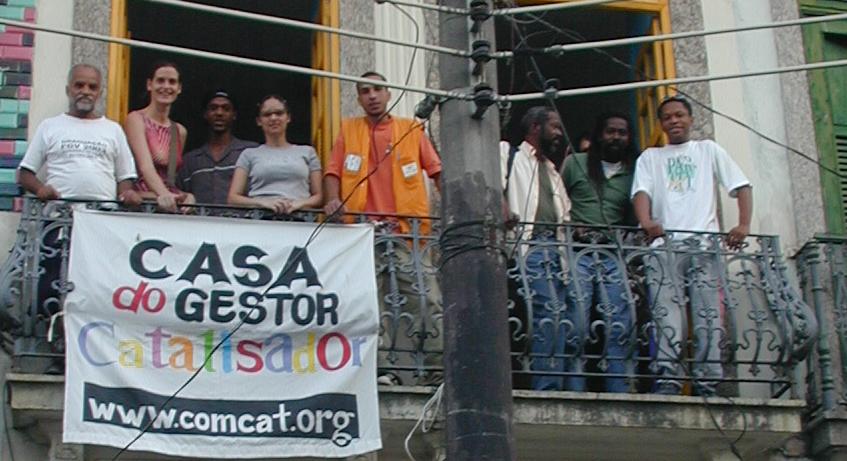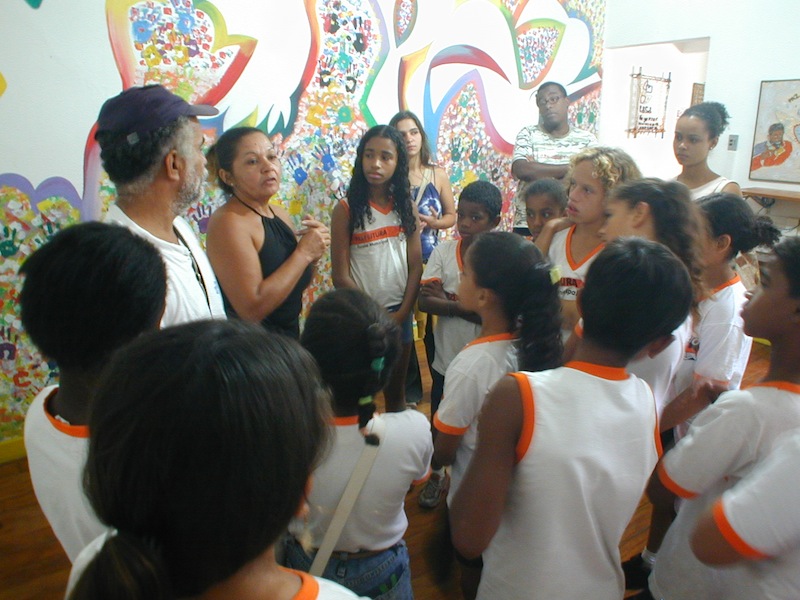Casa Community Technology Hub (2003-2008)
Overview
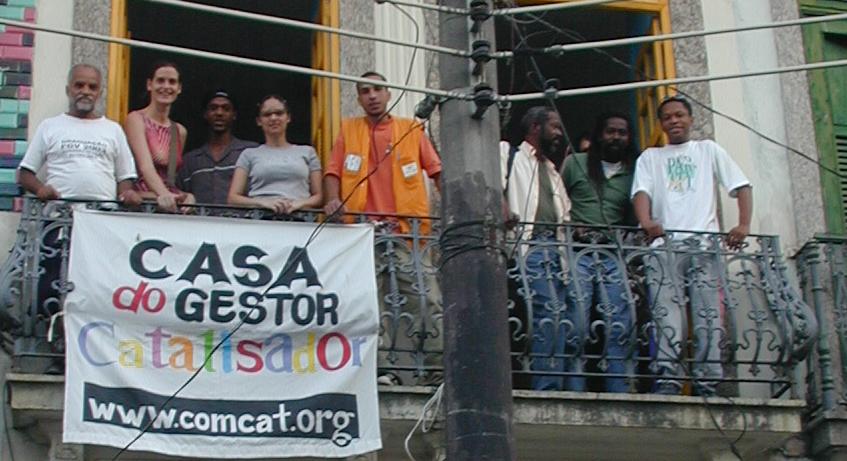 In the early 2000s, the lack of physical meeting spaces and Internet access severely limited the potential impact of local leaders and their ability to share community solutions across Rio de Janeiro’s favelas and other low-income communities. We saw that many community leaders, even those who are well known within their own communities and among their own network, tended to work in isolation relative to community projects elsewhere in the city.
In the early 2000s, the lack of physical meeting spaces and Internet access severely limited the potential impact of local leaders and their ability to share community solutions across Rio de Janeiro’s favelas and other low-income communities. We saw that many community leaders, even those who are well known within their own communities and among their own network, tended to work in isolation relative to community projects elsewhere in the city.
As a result, in early 2003 CatComm launched the Casa Technology Hub, or Casa do Gestor Catalisador, in Rio’s central historic port area.
Over the following years, with no formal publicity, the Casa attracted more than 1050 local leaders from 215 neighborhoods across the city of Rio. An additional 400 professionals and students (including journalists, NGO activists, professors and university students) also shared the space, not to mention community organizers from 7 other Rio municipalities, 23 of Brazil’s 26 states, and 22 nations. Check out this illustrative presentation of how this network worked.
By the Casa’s 5th birthday in February 2008, access to the Internet within Rio’s communities was widespread, and leaders were increasingly familiar with online communities, as well as new opportunities for face-to-face exchanges created by other organizations and a changing urban context. As a result, we felt confident this was the moment to close the Casa and celebrate its success.
This project can be helpful in any urban region, recognizing that having one central hub, rather than many outposts, is what allows for the exchanges and cross-pollination among diverse groups and neighborhoods to occur.
In 2006, UN Habitat recognized CatComm’s Casa as one of 70 “Actionable Ideas” on urban sustainability. Take a trip down memory lane and check out the full 5-year photo archive of the Casa. Or view a sequence of slide shows Casa staff member Rosa Zambrano pulled together years later documenting the Casa in 2003, 2006, 2007-2008, and an all-in-one summary.
Our Aims with the Casa
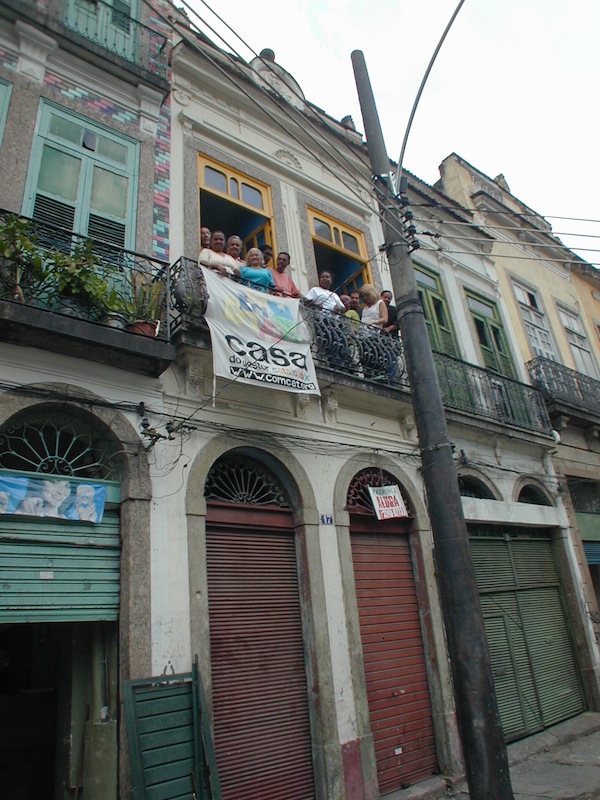 Create a meeting space for community organizers where they could articulate amongst themselves and share experiences, forming a friendly network of solidarity;
Create a meeting space for community organizers where they could articulate amongst themselves and share experiences, forming a friendly network of solidarity;- Offer Internet-based resources for the documentation, dissemination and development of their respective community projects;
- Amplify the exchange of knowledge and information about the initiatives of other NGOs that support community initiatives;
- Constantly increase the network of volunteers supporting the Casa and offering workshops in proposal-writing, English, webdesign, and other areas that arise, specifically to strengthen community organizers;
- Show community art (paintings, handicrafts, and more) through temporary exhibitions in the Casa’s hallway, where admirers visited and purchased community artwork;
- Promote events at the Casa where local individuals and groups who normally had little or no contact with low-income communities but wanted to learn from and support community initiatives could learn more.
Spaces
1. Multimedia Workshop Room
In this space workshops were organized by community leaders and volunteers that frequented the Casa, with the goal of strengthening one another. The CatComm team assisted community members and volunteers who demonstrated interest in sharing their knowledge to develop and manage the workshops. Workshops were held on a wide variety of topics, including: English, French, Spanish, community radio, digital divide, Nós do Cinema (training favela youth in film-making), Spoken Word (hip hop), and meetings among groups including youth justice initiatives, the Babels, and the Caravan for Peace.
2. Computer Lab
 Here community leaders benefitted from Internet access and technical support. The computer lab was used to email funding proposals, maintain contact with other organizers, write letters to public officials, prepare brochures, develop logos, consult news and educational sites, visit CatComm´s website to learn about other projects, and document projects in the Community Solutions Database. Aside from this, volunteers from local universities and computer savvy community leaders offered IT workshops a few times a year for project organizers with difficulty using computers. We developed unique technologies for this room. Mainly, through a system of logins, leaders that frequented the Casa updated their contact information and told us how they were using the space’s facilities with each visit. We also made available a secure and personalized folder where all visitors could save their documents.
Here community leaders benefitted from Internet access and technical support. The computer lab was used to email funding proposals, maintain contact with other organizers, write letters to public officials, prepare brochures, develop logos, consult news and educational sites, visit CatComm´s website to learn about other projects, and document projects in the Community Solutions Database. Aside from this, volunteers from local universities and computer savvy community leaders offered IT workshops a few times a year for project organizers with difficulty using computers. We developed unique technologies for this room. Mainly, through a system of logins, leaders that frequented the Casa updated their contact information and told us how they were using the space’s facilities with each visit. We also made available a secure and personalized folder where all visitors could save their documents.
3. Informal Meeting Room
This small room is where informal meetings happened daily at the Casa. People waiting for computer time or during their lunch sat here and held meetings. Small groups of community leaders, looking for a central place relative to their diverse communities, set up meetings to discuss important themes or events being organized. Also, every two months, during the launch of a new art exhibition, this room would fill with people – community leaders, artists, students, university professors, journalists, and others – who’d come to appreciate art, hear the music of the Carnaval band Escravos da Mauá (whose sessions happen in the square in front of the Casa), and meet new friends.
4. CatComm Gallery: Community Art Exhibitions
Local realities, challenges, successes and hopes, are frequently expressed in art and crafts made by artists from low-income communities. The CatComm Gallery was a space for the promotion of community artists and craftspeople engaged in Rio’s social movements. Exhibits lasted two months following the official launch party. The Gallery occupied the entrance hall and the multimedia workshop room of the Casa.
Replicable Features
In Rio de Janeiro, community organizers from throughout the region had a central space in which to meet, exchange ideas, and share experiences. The connections made and information exchanged were spontaneous. Our function was to maintain the space as inviting and nurturing of community activities. We would like to share experiences with and help inspire similar spaces elsewhere.
The following is a list of the characteristics of the space we recommend in cases of replication:
- A location accessible by one ride on public transport from any location within the metropolitan region;
- A”homey” space: the fact that it was a house we found to be important in building a fraternal culture of comfort, exchange, and dialogue;
- Staff and frequent visitors presented the Casa and its objectives to all visitors and received them with coffee and biscuits; a refrigerator and lockers were available for temporary use;
- There was no charge for use of the space given the low socio-economic level of community organizers in Rio de Janeiro; in addition we found that the exchange of monetary resources among staff and community organizers weakened the bonds of trust and camaraderie, and so avoided most such exchanges to ensure the healthy nature of the space;
 Upon initial registration, not only were name, community project, and contact information collected, but we asked all visitors what they wanted to learn, and what they could teach others; from this information, workshops were organized;
Upon initial registration, not only were name, community project, and contact information collected, but we asked all visitors what they wanted to learn, and what they could teach others; from this information, workshops were organized;- The space was specifically available to support people in their effort to further projects related to community organizing or social mobilization; individuals wanting to use the space for personal, rather than collective aims, were directed to other Internet café’s or locations for such activities;
- The connections made and information exchanged at the Casa were unpredictable and depended on the organizers that visited the space; the staff’s role was to maintain a friendly space that nurtured and stimulated natural and strengthening exchanges;
- Workshops, debates and lectures offered in the space were organized by volunteers including community organizers that sought out CatComm staff to make use of the space, as were meeting rooms and computer facilities; CatComm staff did not actively direct the use and content of the space;
- The space was neutral relative to differences in gender, race, religion, age, or sexual orientation;
- Community organizers used the Casa’s resources independent of the thematic focus of their work;
- Exchanges among community organizers with diverse interests were actively encouraged; for example, a health project, AUAPARN, organized a computer skills workshop with a women’s group, Woman in Action, and with a homeless movement, Chiquinha Gonzaga;
- Outreach happened naturally, by word-of-mouth; by attentively following these precepts, the space had become a reference among community organizers in Rio and new leaders visited us almost daily thanks to positive outreach by other leaders themselves;
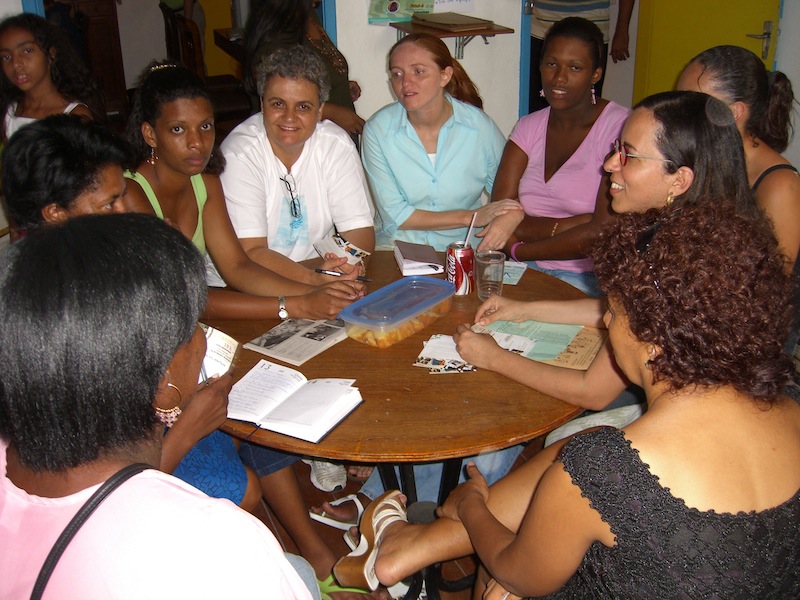 Our staff offered to one only what we could offer to all; this encouraged us to develop stronger bonds with community organizers and volunteers themselves, who effectively drove activity in the space while CatComm had a small staff to simply administer and maintain it;
Our staff offered to one only what we could offer to all; this encouraged us to develop stronger bonds with community organizers and volunteers themselves, who effectively drove activity in the space while CatComm had a small staff to simply administer and maintain it;- Regular open meetings were held with Casa users to determine how the space and CatComm’s website could better serve them, and to discuss important issues currently affecting local projects;
- Every visit and the use of computers and meeting spaces was registered in a customized database in order to determine how the space was being used, what worked, and what could improve.
The most important factor for success was the philosophy that went into opening and managing the Casa: trust, respect, diversity, support, and compassion were driving values.
Primary Obstacles
As with all projects, there were obstacles. In the interest of supporting the success of similar projects elsewhere, we list those that were most important:
- Finding and preparing staff capable of dealing with the emotional toll of working with people coming in daily with problems not only of their own, but of their projects and their project beneficiaries.
- Finding appropriate ways to deal with individuals who came to use the space with the wrong motivations: for personal benefit or private gain, particularly given our hard work to make the space inviting and supportive of all.
- Working with very diverse constituencies in the same space, some of which did not get along due to religious and philosophical differences.
Evaluation
Several different forms of assessing our work took place over the Casa’s 5 years:
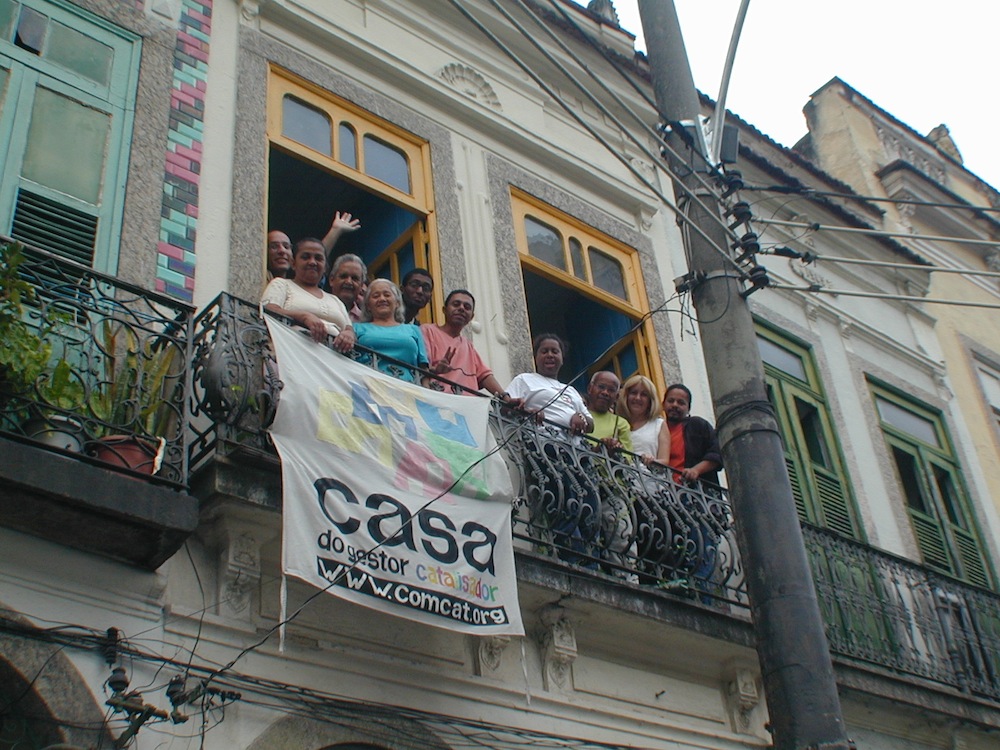 Monthly open meetings were conducted generating precious feedback into how to make the space more useful, as well as provide opportunities for leaders to meet each other;
Monthly open meetings were conducted generating precious feedback into how to make the space more useful, as well as provide opportunities for leaders to meet each other;- A Community Advisory Board was formed to provide monthly input during private meetings during the Casa’s last 2 years as we assessed whether to maintain the space;
- Daily sign-ins from computer users requested input on the status of the community work they were undertaking at the Casa and how the space was supporting that process;
- Regular conversations between community leaders and individual staff where successes generated thanks to the space were mentioned were recorded during weekly written staff summaries;
- All activities were recorded in our photo archive; and
- Staff blogged results of activities in the space.

